NACA NASA X-1E
Production Time 9 to 10 weeks
Shipment is by FedEx, UPS or DHL International Express Courier with a normal door-to-door delivery time worldwide of within 2-3 business days after dispatch. Due to the current volatility of world fuel prices, the amount mentioned here is our best estimate for DHL and UPS and may be subject to change at the time of shipping.

Model Description: NACA NASA X-1E Wood Replica Scale Custom Model
Manufacturer: NACA NASA
Wingspan: 12.6 Inches (32 Centimeters)
Height: 6 Inches (15.2 Centimeters)
Scale: 1:22
$239.50
Production Time 9 to 10 weeks
-
United States dollar ($)
-
Pound sterling (£)
-
Euro (€)
-
Australian dollar ($)
-
Canadian dollar ($)
-
Singapore dollar ($)
-
Swiss franc (CHF)
-
Japanese yen (¥)
-
Danish krone (kr.)
-
Hong Kong dollar ($)
-
Norwegian krone (kr)
-
Swedish krona (kr)
-
United Arab Emirates dirham (د.إ)
General Product Description
Our PlaneArts NACA NASA X-1E model exhibits unique, unrivaled quality and detailed design to come as close as possible to the accuracy of the actual plane. It comes as standard with a robust, durable base or stand which is available in a variety of different finishes designed to match your own personal requirements including solid wood, wood with polished metal supports or adjustable wood wall mount and will be ready within about 9-10 weeks from placement of order.
The NACA NASA X-1E is made of the finest kiln dried renewable mahogany wood (commonly known as Lauan or Meranti) which has undergone many stages of carving and meticulous and careful sanding giving the beautiful, finished museum quality masterpiece. Many collectors and model connoisseurs demonstrate their preference for genuine handmade and hand painted mahogany wood models rather than plastic or die cast (diecast) alternatives due to the overall look and totally different feel of the item - we trust you will find the same. We can however, if required produce the same model in Solid Cast Resin so just click and contact us for further information. Our craftsmen and gifted artisans ensure that our finely handcrafted model air and spacecraft match the precise blueprint details of the original version. The paint scheme, markings and parts are closely matched, reflecting the original craft. This stylish top-quality desktop replica model will surely enthrall anyone who receives this as a gift and for sure one of the most appropriate and desirably collectable gifts for every Space or Science Fiction enthusiast and avid Spaceship or Scifi collector whilst also displaying a perfect resemblance to the actual NACA NASA X-1E model.
If you require, we can also make the NACA NASA X-1E model in any other markings, livery or colour scheme you require and if necessary, in a different size or scale. Just click here to contact us with a description or photographs of what you require, and we will let you have a quotation for the necessary customization by return email. We can also make bespoke scale replicas of any other private / civil commercial airliner or airliners, helicopter, glider, gliders with engines, military jet, warplane jets, propeller warplanes, biplane, triplane, tail fin, spacecraft, rocket or NASA model you require in any airline, military or civilian livery or colors. We also produce Gerry Anderson models, model airship, blimp, dirigible, blimps, boat, and ship collectibles. Wall plaque or seal for military, government or private customers. Wall plaque or seal for military, government or private customers. Again, by clicking here to contact us just let us know exactly what you need.
The Legacy of the NACA NASA X-1E: Pioneering Supersonic Flight
The NACA NASA X-1E stands as a testament to the groundbreaking advancements in aerospace technology and supersonic flight research during the mid-20th century. As one of the significant successors in the Bell X-1 series, the X-1E was instrumental in pushing the boundaries of high-speed flight and contributed vital data that shaped the future of aviation and space exploration.
Historical Context and Development:
Developed from the original Bell X-1, the first aircraft to break the sound barrier in level flight, the X-1E was part of the U.S. Air Force and NACA (National Advisory Committee for Aeronautics, NASA’s predecessor) efforts to explore transonic and supersonic flight regimes. The X-1E was specifically modified from the second X-1 aircraft, incorporating advanced design changes that aimed to extend its speed and altitude capabilities.
The modifications included a thinner wing profile with a 4% thickness to chord ratio, designed to reduce aerodynamic drag at higher speeds, and a strengthened fuselage to withstand the increased stresses of supersonic flight. Additionally, the X-1E was equipped with a new canopy made of reinforced glass to improve pilot visibility and safety.
Achievements in Flight:
Piloted by notable test pilots such as Joe Walker and John B. McKay, the X-1E embarked on a series of test flights that began in December 1955. Over its operational period, the aircraft completed a total of 26 powered flights, contributing significantly to the understanding of aerodynamic phenomena at speeds close to and exceeding the speed of sound.
One of the X-1E’s notable achievements was reaching a top speed of Mach 2.24, approximately 1,450 miles per hour, at an altitude of 73,000 feet. This flight, conducted by Joe Walker, set a new record for aircraft speed and altitude, demonstrating the potential for supersonic military and civilian aviation applications.
Scientific Contributions:
The data collected from the X-1E flights provided researchers with invaluable insights into flight dynamics, structural integrity, and thermal stresses associated with supersonic speeds. This information was crucial in the design and development of later supersonic and hypersonic aircraft, including the X-15, which would further extend the boundaries of man flight to the edges of space.
Furthermore, the X-1E’s experiments helped refine theories on shock waves and sonic booms, phenomena that occur when aircraft exceed the speed of sound. Understanding these effects was essential for the subsequent design of aircraft that could minimize sonic boom disruptions, a consideration still relevant in modern supersonic aircraft development.
Legacy and Impact:
The legacy of the NACA NASA X-1E extends beyond its immediate contributions to aviation technology. As a pivotal project in the history of NACA, which transitioned into NASA in 1958, the X-1E exemplifies the collaborative efforts between government agencies and private industry in advancing aerospace technology.
Today, the X-1E is preserved and displayed at the NASA Armstrong Flight Research Center in California, serving as a historical artifact that continues to inspire engineers, pilots, and scientists engaged in the ever-evolving field of aerospace. Its legacy is not just in the records it set or the data it gathered, but in its role in fostering a deeper understanding of our capabilities and limitations in the vast arena of air and space.
As we look back at the achievements of the X-1E, it’s clear that this remarkable aircraft was not just a machine of its time but a beacon for future innovations, paving the way for the advancements we see in contemporary aerospace endeavors.
| Weight | 6 kg |
|---|---|
| Dimensions | 17 × 12.6 × 6 in |

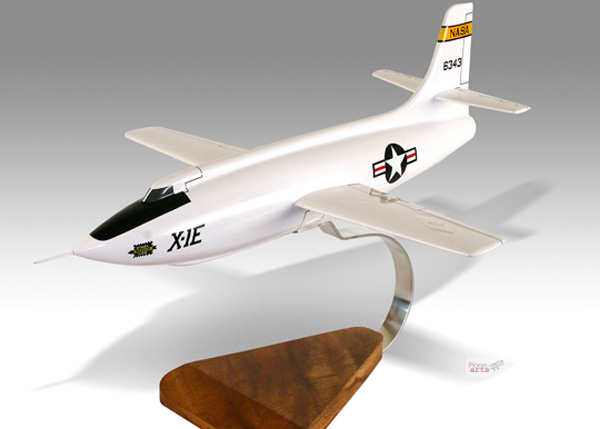

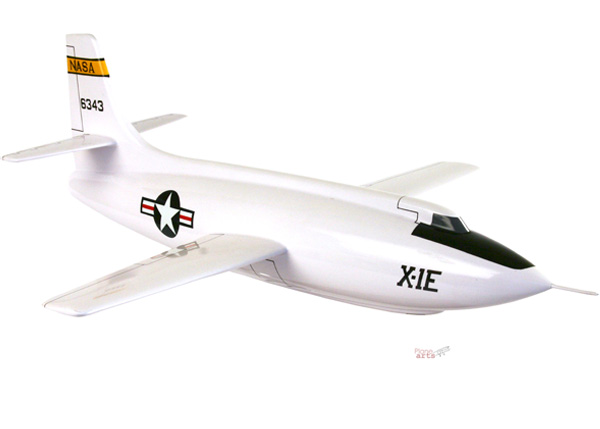

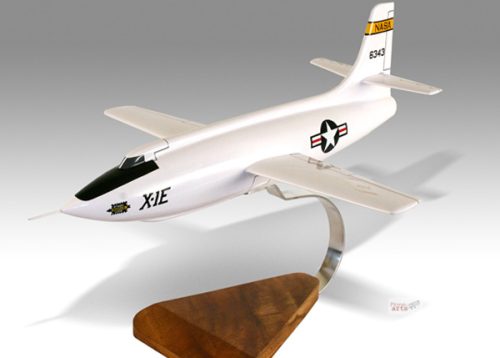


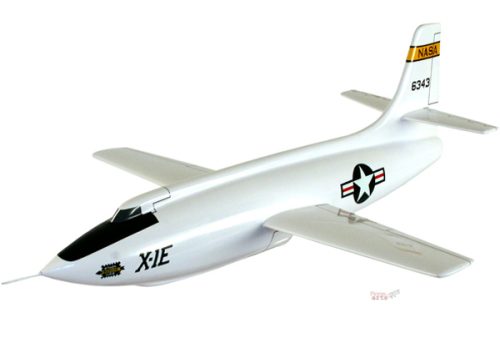

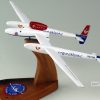
Reviews
There are no reviews yet.